Birdfinding.info ⇒ This beautiful endemic dove is rare and endangered, but still locally common in the Sierra de Bahoruco. It is most readily observed in “Quail-Dove Alley” on the Rabo de Gato Trail and along Zapotén Road in the stretch below Zapotén—where it is often possible to see several on the road at first light. Can also be found in the cloud forest at Cachote and at Ébano Verde.
White-fronted Quail-Dove
Geotrygon leucometopia
Endemic to Hispaniola, where it is localized and declining in humid montane forests.
Presently known only from the Dominican Republic in the Cordillera Central and Sierra de Bahoruco (where it appears to reach its peak abundance within 1 km of the Haitian border, so it seems likely to occur in adjacent parts of Haiti as well).
Formerly also inhabited the Sierra de Neiba and Haiti’s Massif de la Selle. May still persist undetected in remote areas or recolonize these ranges from its nearby stronghold in the Sierra de Bahoruco.
Identification
Slaty-gray with a prominent white forehead, maroon mantle, bluish rump, and chestnut vent. The bill is bicolored: red with a whitish tip.
The other quail-doves on Hispaniola—Key West and Ruddy—have entirely different patterns and coloration.
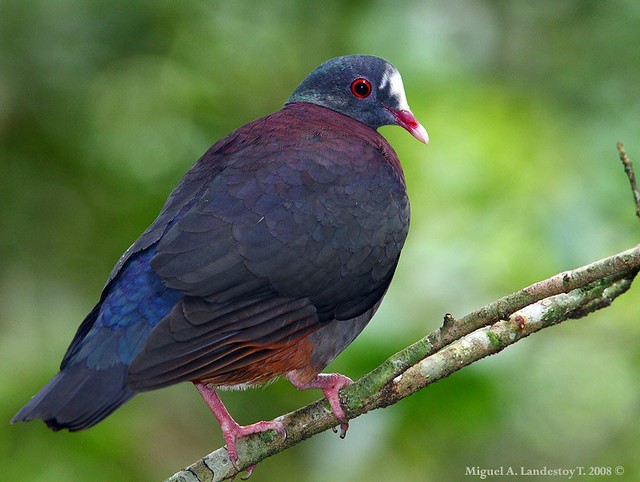
White-fronted Quail-Dove, showing blue on rump. (Sierra de Bahoruco, Dominican Republic; April 19, 2008.) © Miguel A. Landestoy T.
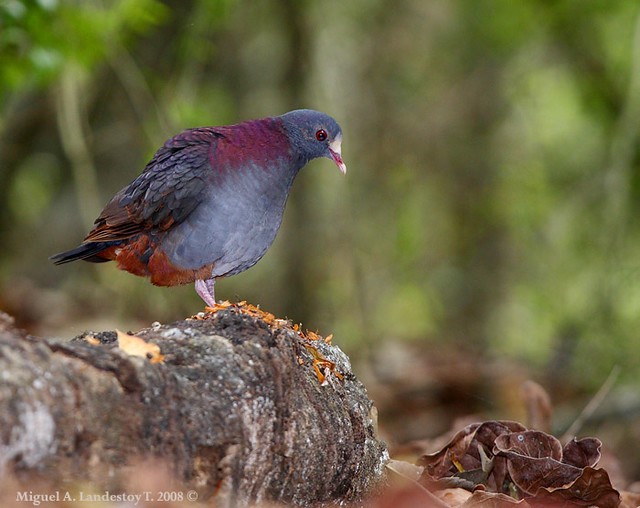
White-fronted Quail-Dove, showing maroon mantle and chestnut vent. (Rabo de Gato Trail, Dominican Republic; April 4, 2008.) © Miguel A. Landestoy T.

White-fronted Quail-Dove. (Rabo de Gato Trail, Dominican Republic; April 4, 2008.) © Miguel A. Landestoy T.
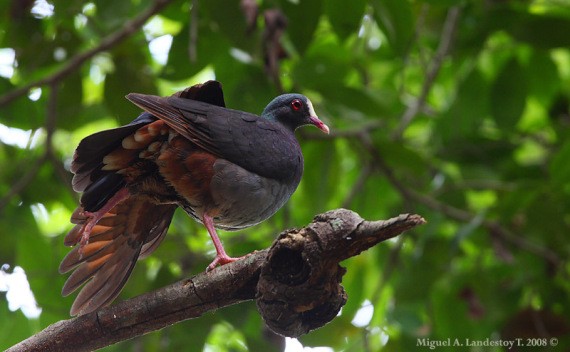
White-fronted Quail-Dove, showing rusty flight feathers. (Rabo de Gato Trail, Dominican Republic; April 4, 2008.) © Miguel A. Landestoy T.
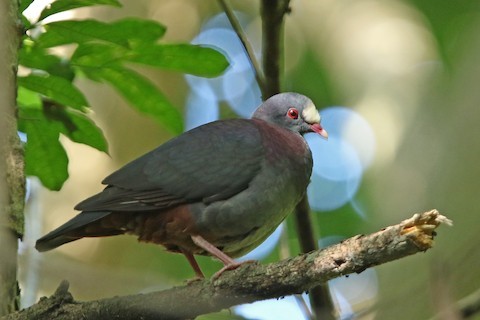
White-fronted Quail-Dove. (Rabo de Gato Trail, Dominican Republic; January 20, 2019.) © Volker Hesse
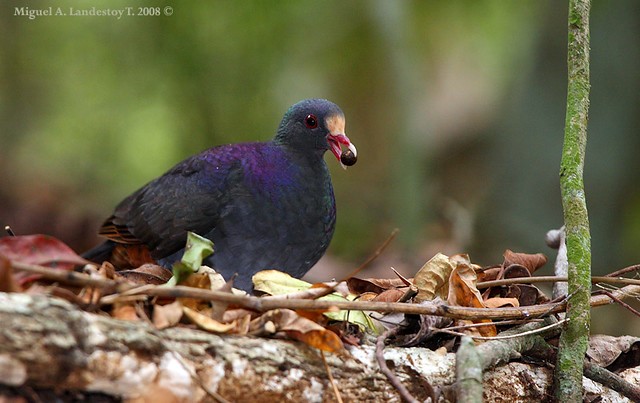
White-fronted Quail-Dove, showing purple iridescence on mantle. (Rabo de Gato Trail, Dominican Republic; April 4, 2008.) © Miguel A. Landestoy T.
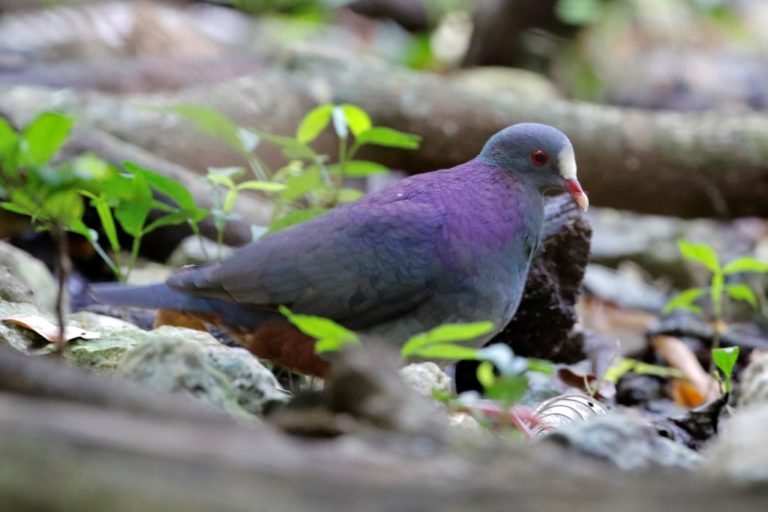
White-fronted Quail-Dove. (Rabo de Gato Trail, Dominican Republic; April 14, 2018.) © Dax M. Román E.
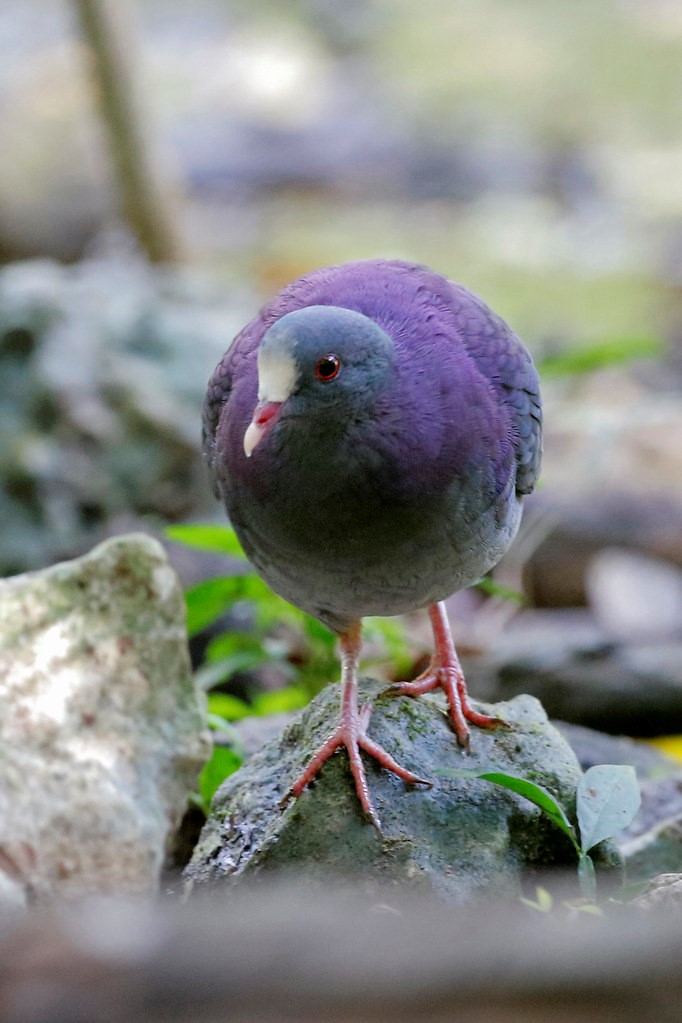
White-fronted Quail-Dove. (Rabo de Gato Trail, Dominican Republic; April 14, 2018.) © Dax M. Román E.

White-fronted Quail-Dove. (Rabo de Gato Trail, Dominican Republic; April 4, 2008.) © Miguel A. Landestoy T.

White-fronted Quail-Dove. (Sierra de Bahoruco, Dominican Republic; April 8, 2019.) © Pedro Genaro Rodríguez
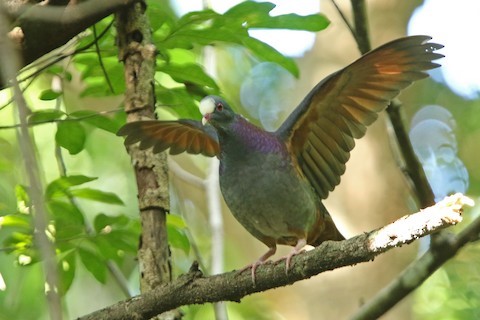
White-fronted Quail-Dove, showing rusty flight feathers. (Rabo de Gato Trail, Dominican Republic; April 8, 2019.) © Volker Hesse

White-fronted Quail-Dove. (Zapotén, Dominican Republic; April 10, 2015.) © Alan Van Norman

White-fronted Quail-Dove, frontal view. (Rabo de Gato Trail, Dominican Republic; April 4, 2008.) © Miguel A. Landestoy T.

White-fronted Quail-Dove. (Rabo de Gato Trail, Dominican Republic; April 14, 2018.) © Dax M. Román E.
Notes
Monotypic species. Formerly considered conspecific with Gray-fronted Quail-Dove.
IUCN Red List Status: Endangered.
References
Alas & Colores, White-fronted Quail-Dove (Geotrygon leucometopia), https://alasycolores.com.do/en/aves/perdiz-coquito-blanco.
BirdLife International. 2016. Geotrygon leucometopia. The IUCN Red List of Threatened Species 2016: e.T22729909A95023120. http://dx.doi.org/10.2305/IUCN.UK.2016-3.RLTS.T22729909A95023120.en. (Accessed August 23, 2017.)
eBird. 2019. eBird: An online database of bird distribution and abundance. Cornell Lab of Ornithology, Ithaca, N.Y. http://www.ebird.org. (Accessed May 26, 2019.)
Gibbs, D., E. Barnes, and J. Cox. 2001. Pigeons and Doves: A Guide to the Pigeons and Doves of the World. Yale University Press, New Haven, Connecticut.
Latta, S., C. Rimmer, A. Keith, J. Wiley, H. Raffaele, K. McFarland, and E. Fernandez. 2006. Birds of the Dominican Republic and Haiti. Princeton University Press, Princeton, N.J.
Raffaele, H., J. Wiley, O. Garrido, A. Keith, and J. Raffaele. 1998. A Guide to the Birds of the West Indies. Princeton University Press, Princeton, N.J.

